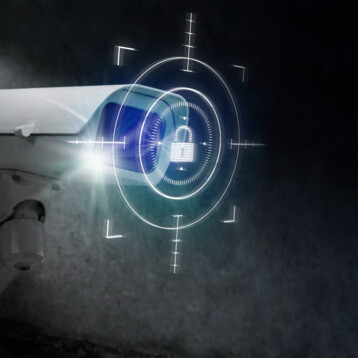|
Forget about signatures and photo IDs, forget about PIN numbers, forget about fingerprint, voiceprint, iris scan, or facial recognition security technologies to counter forged or stolen user IDs. Enter Fujitsu’s palm vein ID authentication, which uses an infrared sensor to capture the user’s vein pattern unique to every individual’s palm for an exquisitely sensitive biometric authentication technique. Fujitsu’s novel ID technology has a few other advantages over other biometric technologies. The palm vein scanner has no deleterious effect on the body, nor does it require that the device be touched, unlike current fingerprint scanners, which proved to be disadvantageous because of sanitary and/or psychological issues related to hygiene or association with criminals, as well as reasons of usability (frequent use may increase the rejection rate of the system). Other limitations of various other technologies are related to measuring external features. Aging or the camera angle could affect facial recognition systems; fingerprints can be forged, as shown by a University of Tokyo study. On the contrary, palm vein recognition seems not to be affected by aging; neither cuts, scars, tattoos, nor skin color affect the scan’s outcome; and, given that veins are internal, they can hardly be tampered with.
The Basis of Palm Vein Technology
|
An individual first rests his wrist, and on some devices, the middle of his fingers, on the sensor’s supports such that the palm is held centimeters above the device’s scanner, which flashes a near-infrared ray on the palm. Unlike the skin, through which near-infrared light passes, deoxygenated hemoglobin in the blood flowing through the veins absorbs near-infrared rays, illuminating the hemoglobin, causing it to be visible to the scanner. Arteries and capillaries, whose blood contains oxygenated hemoglobin, which does not absorb near-infrared light, are invisible to the sensor. The still image captured by the camera, which photographs in the near-infrared range, appears as a black network, reflecting the palm’s vein pattern against the lighter background of the palm.
An individual’s palm vein image is converted by algorithms into data points, which is then compressed, encrypted, and stored by the software and registered along with the other details in his profile as a reference for future comparison. Then, each time a person logs in attempting to gain access by a palm scan to a particular bank account or secured entryway, etc., the newly captured image is likewise processed and compared to the registered one or to the bank of stored files for verification, all in a period of seconds. Numbers and positions of veins and their crossing points are all compared and, depending on verification, the person is either granted or denied access.
How Secure is the Technology?
On the basis of testing the technology on more than 70,000 individuals, Fujitsu declared that the new system had a false rejection rate of 0.01% (i.e., only one out of 10,000 scans were incorrect denials for access), and a false acceptance rate of less than 0.00008% (i.e., incorrect approval for access in one in over a million scans). Also, if your profile is registered with your right hand, don’t log in with your left – the patterns of an individual’s two hands differ. And if you registered your profile as a child, it’ll still be recognized as you grow, as an individual’s patterns of veins are established in utero (before birth). No two people in the world share a palm vein pattern – even those of identical twins differ (so your evil twin won’t be able to draw on your portion of the inheritance!)
Potential Applications
|
The new technology has many potential applications (some of which are already in use) such as an ultra secure system for ATMs and banking transactions, a PC, handheld, or server login system, an authorization system for front doors, schools, hospital wards, storage areas, and high security areas in airports, and even facilitating library lending, doing away with the age-old library card system. Fujitsu is planning to continue the development of the palm vein technology, shrinking the scanner to fit a mobile phone. Fujitsu hopes that its success might usher in a new age in personal data protection techniques, which is especially important when sales of Smartphones and other handhelds are skyrocketing.
TFOT had a quick word with Mr. H. Watanuki of Fujitsu’s Biometric Business Development Department about the application of their palm vein technology.
Q: Is there currently a retail product on the market that uses your technology?
|
Q: When do you expect that commercial end-user products (such as personal computer biometric systems and door-lock mechanisms) based on your technology will be available on the global market?
A: Fujitsu has globally released an SDK (software development kit or “devkit”) for palm vein technology since April, 2006. We do hope that some vendors will soon develop related products using our SDK, including the ones you have described.














